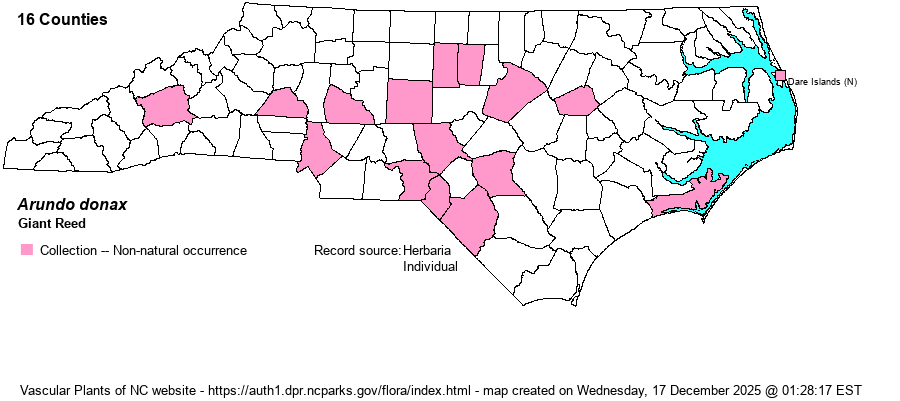| Author | L. | |
| Distribution | Scattered in the Sandhills and Piedmont; rare in the Mountains and outer Coastal Plain. The Buncombe County site is at the Biltmore nursery, where plants have persisted (after planting) for more than 100 years. Planted in many counties not mapped, and likely to be found as local escapes.
Native to Eurasia; in N.A. from VA and WV to KS and northern CA, south to FL, TX, and southern CA. | |
| Abundance | Uncommon as self-reliant colonies. Planted in many counties not mapped, and likely to be found as local escapes. | |
| Habitat | Moist to wet soil of roadsides, streambanks, ditches, waste ground. In the Old World, used extensively for thatching, building material, musical instruments, mats, screens, stakes, etc. | |
| Phenology | Flowering and fruiting September-November. | |
| Identification | Giant Reed should be familiar to most people owing to its remarkable height, and it lives up to its name -- growing up to 15 or even 30 feet tall! Erect stems grow from thick, tough, horizontal rhizomes. The leaves are 2-ranked (distichous), up to a 3 feet long, and numerous. The inflorescence, when well-developed, is even larger than that of Phragmites and held prominently at the tip of the stem; however, it is seldom seen. | |
| Taxonomic Comments | | |
| Other Common Name(s) | | |
| State Rank | SE | |
| Global Rank | G5 | |
| State Status | | |
| US Status | | |
| USACE-agcp | FAC link |
| USACE-emp | FACU link |

